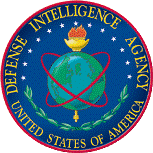United States Department of Defense
Date of this Version
11-1950
Document Type
Article
Abstract
This is a textbook used at the Army Transportation School run by the Transportation Corps. In the 1950s, military schools related to one of the Army Technical Services were run by that service.
The modern US Army vision of the technical intelligence developed during World War II. Shortly before World War II, Army Technical Services had been instructed to set up intelligence sections in the offices of their chiefs. The technical services were bureaus which supplied weapons, equipment, and services to the Army, managed the careers of officers in a particular branch, trained specialists, and organized and trained special purpose military units. There were a number of technical services including the Chemical Warfare Service, the Medical Department, the Ordnance Department, the Quartermaster Corps, the Transportation Corps, etc. The Transportation Corps provided non-combat vehicles, operated Army port and depot facilities, and operated Army transportation systems. It trained specialized transportation units for use in the field. It managed the careers of officers commissioned in the Transportation branch. The head of the Transportation Corps was a general with the title of the Chief of Transportation (COFT). The Office of the Chief of Transportation was the headquarters of the Transportation Corps in Washington, DC, and that office was part of the Headquarters, Department of the Army.
During World War II, the importance of studying foreign military equipment had become apparent and procedures for collecting and evaluating of equipment had been developed. Technical intelligence organizations in the Technical Services grew and operating procedures were developed and refined. Technical intelligence came to be defined as production and dissemination of intelligence about foreign weapons and equipment and production and dissemination of intelligence about foreign capabilities analogous to those of the technical services in the US Army. For example, during the 1950s, the Transportation Corps was responsible for intelligence concerning the transportation systems of the Warsaw Pact armed forces. Since there was no national intelligence agency with expertise in transportation systems existed, the Transportation Corps was made responsible for intelligence about ports and about waterways, railway, and road systems of foreign nations.
This textbook describes technical intelligence organizations, the responsibilities of the transportation corps unites, and process of collection, production, and dissemination of transportation intelligence. The last few chapters give detailed lists of information requirements needed to create railroad, highway, inland waterway, and ports intelligence.
Included in
Defense and Security Studies Commons, Military and Veterans Studies Commons, Other Engineering Commons, Peace and Conflict Studies Commons, Soviet and Post-Soviet Studies Commons



Comments
(1) This is a digital copy of a copy of a document borrowed from the Army Transportation School in May 2010.
(2) In the Army Publications System, textbooks for use at service schools were called a “Special Text.”
(3) Since the Army reuses manual numbers and name, the date of the manual must be noted to unambiguously cite a manual. The minimal citation for this text would be, “ST 55-30-1, 50.”